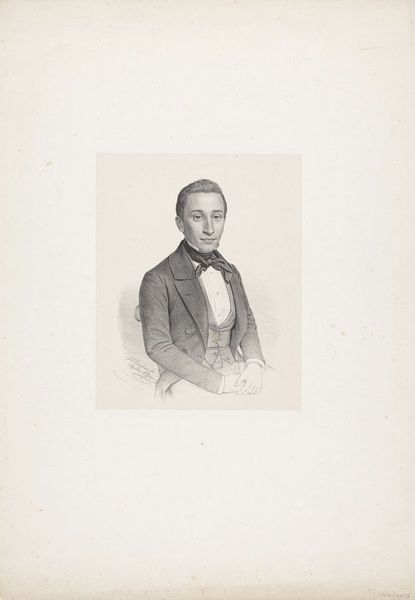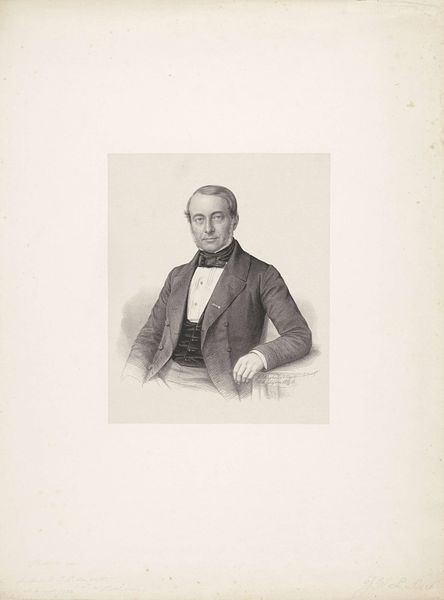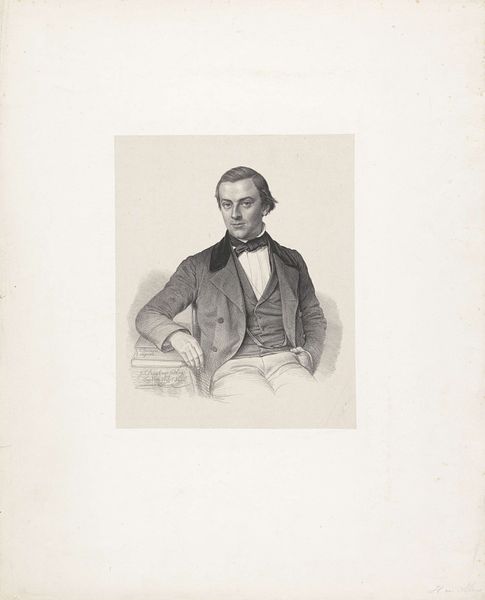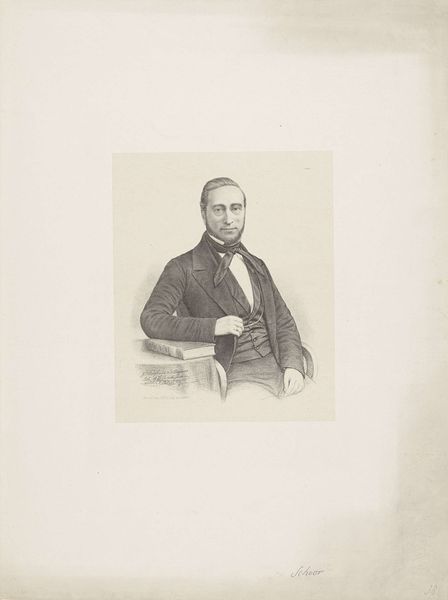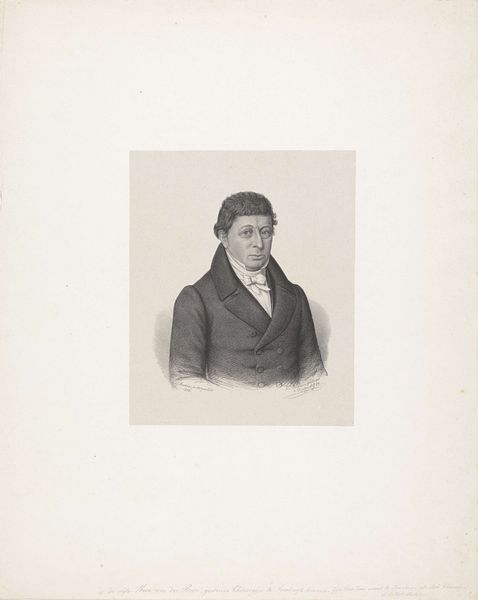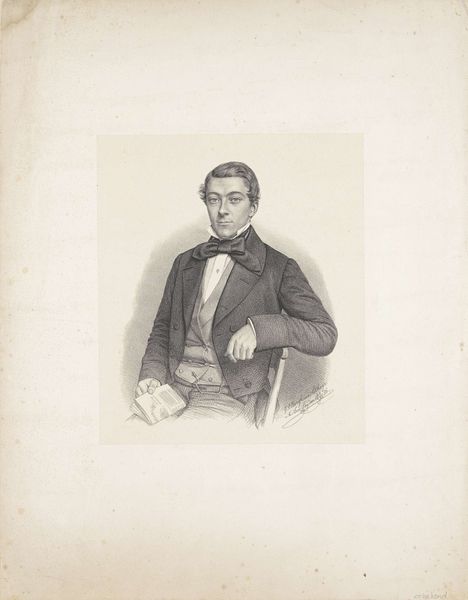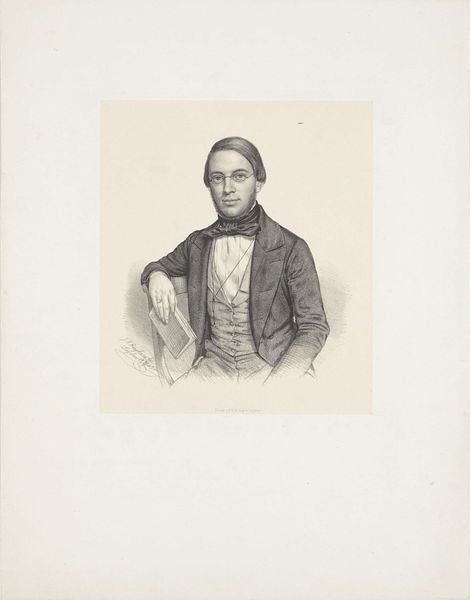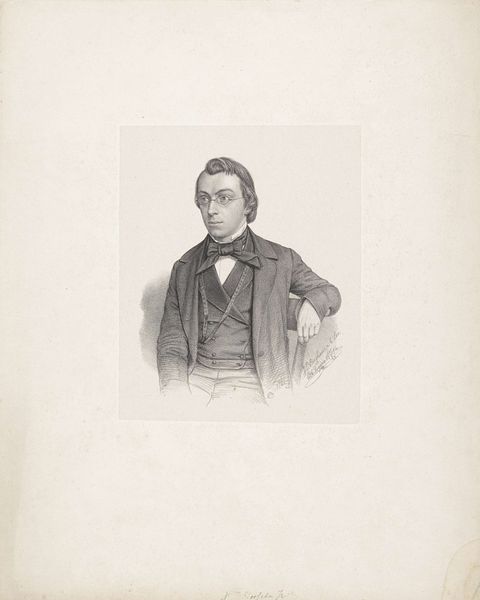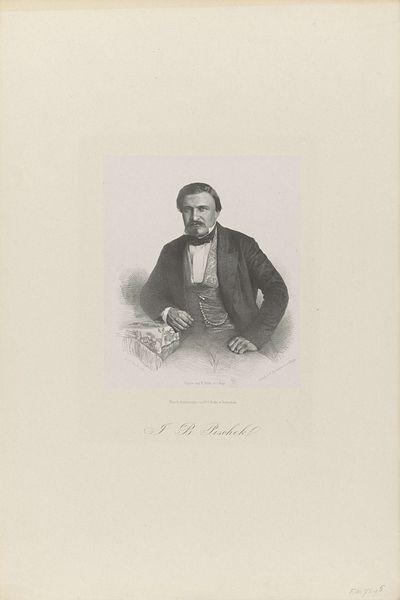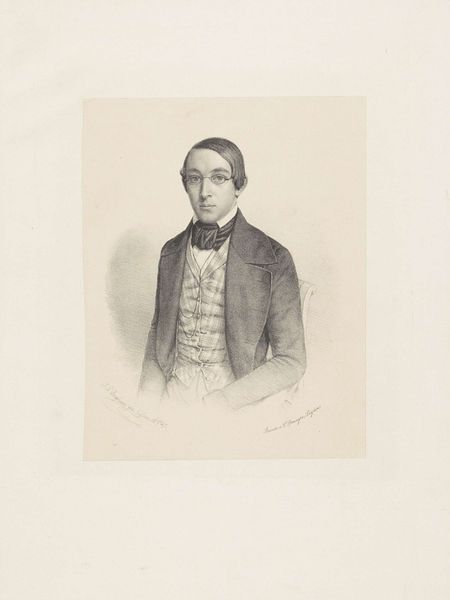
Portret van een onbekende man, mogelijk F.A.W. Miguel 1842 - 1887
0:00
0:00
adrianusjohannesehnle
Rijksmuseum
drawing, print, etching, graphite, engraving
#
portrait
#
pencil drawn
#
drawing
# print
#
etching
#
pencil sketch
#
pencil drawing
#
graphite
#
engraving
#
realism
Dimensions: height 523 mm, width 385 mm
Copyright: Rijks Museum: Open Domain
Editor: This is "Portrait of an Unknown Man, possibly F.A.W. Miguel," an etching by Adrianus Johannes Ehnle, dating sometime between 1842 and 1887. It’s got a serious, almost austere feel. What do you see when you look at this portrait? Curator: I see a product of its time, but also a mirror reflecting anxieties about identity and representation. The subject’s anonymity, despite the artist's detailed rendering, begs questions: who gets remembered, and whose stories are erased? The sharp lines and formal attire suggest a societal pressure to conform, a pressure that often marginalizes those who don't fit the mold. What does it mean to present a ‘respectable’ face to the world, especially in a period of social and political upheaval? Editor: So, you're saying the "unknown man" becomes a symbol for those excluded from mainstream narratives? Curator: Precisely. Consider the limitations placed upon marginalized communities in the 19th century – women, people of color, the working class. Their stories were often untold, their identities subsumed by dominant narratives. This portrait, even in its apparent simplicity, raises crucial questions about power, visibility, and the very act of portraiture itself. Who had the privilege to be portrayed and remembered? Editor: That's a compelling point. I hadn't thought about the act of creating the portrait itself as a reflection of social power. Curator: Think about the gazes involved – the artist’s, the subject’s, ours. Each gaze carries its own baggage, its own set of assumptions and biases. This artwork invites us to deconstruct those gazes and challenge the traditional power dynamics inherent in portraiture. It's more than just a picture; it’s an invitation to interrogate the past and its lingering effects on the present. Editor: This has really changed how I view portraiture! Thank you for pointing out these layers. Curator: Absolutely! Art is powerful when we engage with it critically and understand its connection to larger social narratives.
Comments
No comments
Be the first to comment and join the conversation on the ultimate creative platform.
